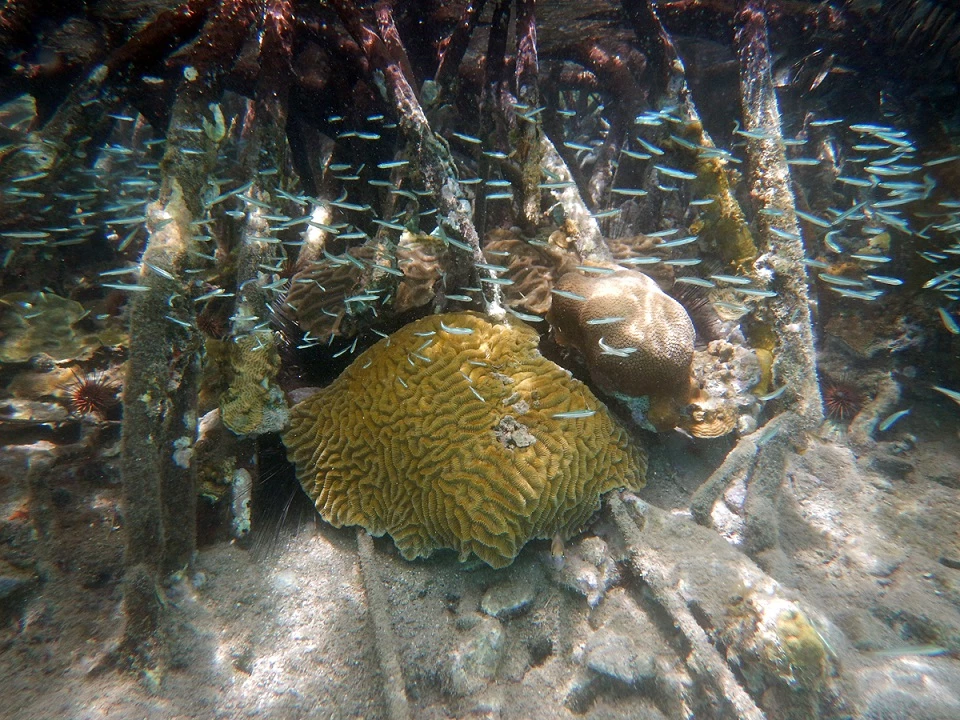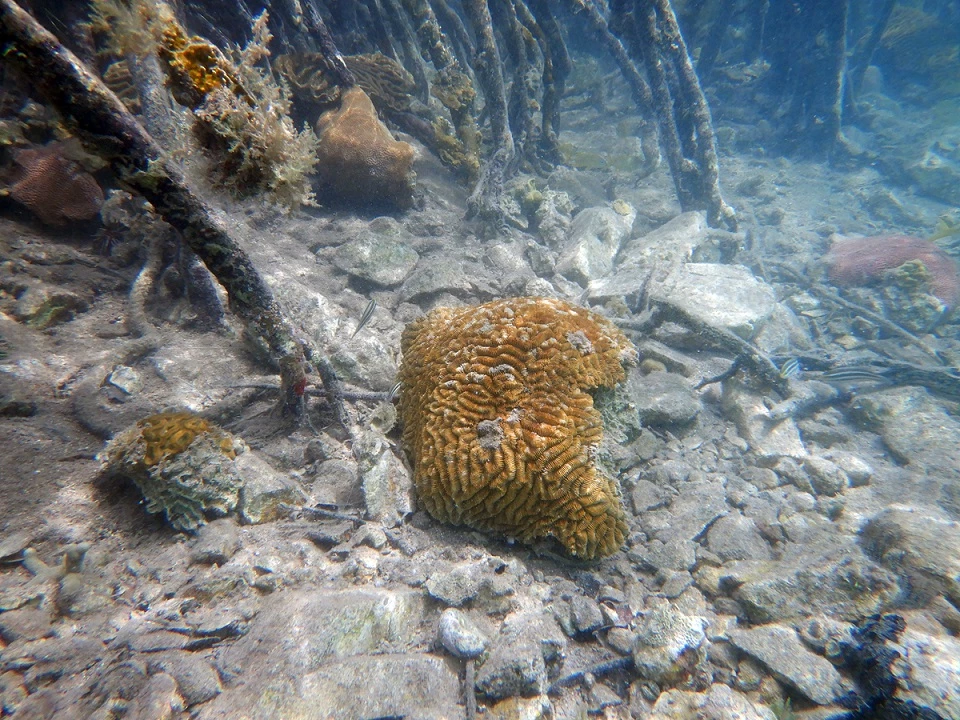Last updated: July 20, 2018
Article
Hurricane Hole Post 2017 storms
Hurricane Hole historically has provided a safe haven for boats and for marine life during storms. Red mangrove trees growing along the shores of bays within Hurricane Hole have prop roots that extend down into the water and which support a diverse community of corals, sponges, and other animals and plants. So far we know of no other place like this in the Caribbean (Rogers 2017). Over 80 species of fish and 30 species of coral have been found there.
- Duration:
- 1 minute, 14 seconds
This video shows the diversity of life in the mangroves of Hurricane Hole prior to Hurricanes Irma and Maria.
- Duration:
- 1 minute, 54 seconds
Video of the north side of Water Creek in Hurricane Hole. Taken March 7 2018 following the hurricanes of 2017.
“How long will it take for this special place to recover?” The honest answer is , “No one knows”. It is not known if there could be full recovery to what was present before the hurricanes. This would require recovery of mangrove trees as well as marine life below the surface. No previous studies of hurricane damage to such an unusual coral/mangrove habitat have been published. Although within a few weeks of the storms there were signs of trees and other plants sprouting new shoots and leaves, nothing comparable occurs underwater because corals grow very slowly, less than 1 cm a year. Scientists from the US Geological Survey and Santa Fe College (Gainesville, Florida) will be coming to do research to document the damage and to examine the potential for recovery of the mangroves as well as the corals and other marine life below the surface. The shade previously provided by the mangrove trees seemed to be making this shallow environment less stressful for corals, including some rare species that typically grow in deeper water. The British Virgin Islands also sustained severe damage, and they would not be expected to be a good source of coral and sponge larvae to replace what was in Hurricane Hole. However, there is hope, as the marine life that remains within Hurricane Hole and on nearby reefs can be a source of new growth on and near the prop roots.
Pre and Post Hurricane Hole Coral Storm photos


Left image
Pre storm Meandrina
Credit: Caroline Rogers
Right image
Post storm Meandrina
Credit: Caroline Rogers
